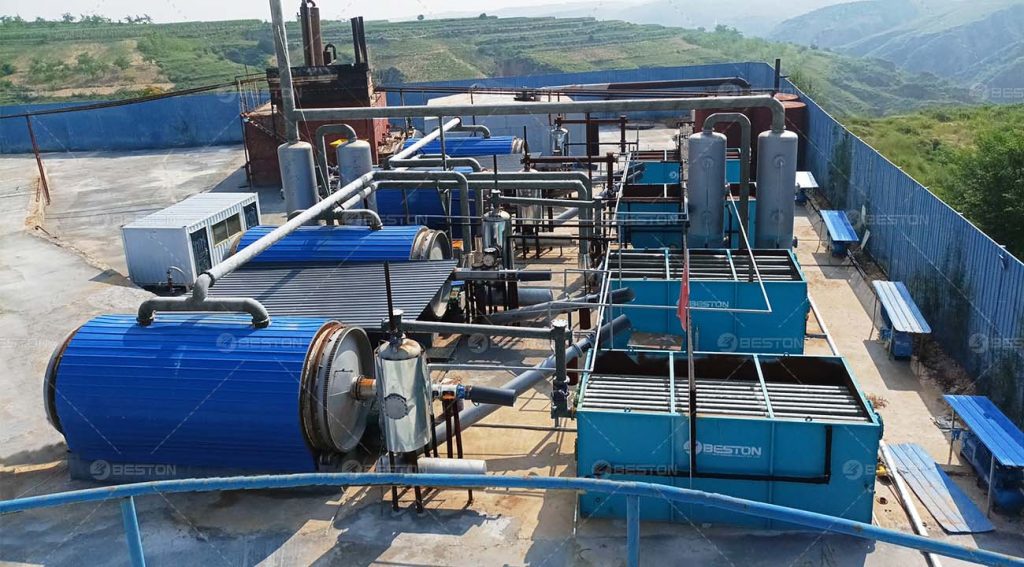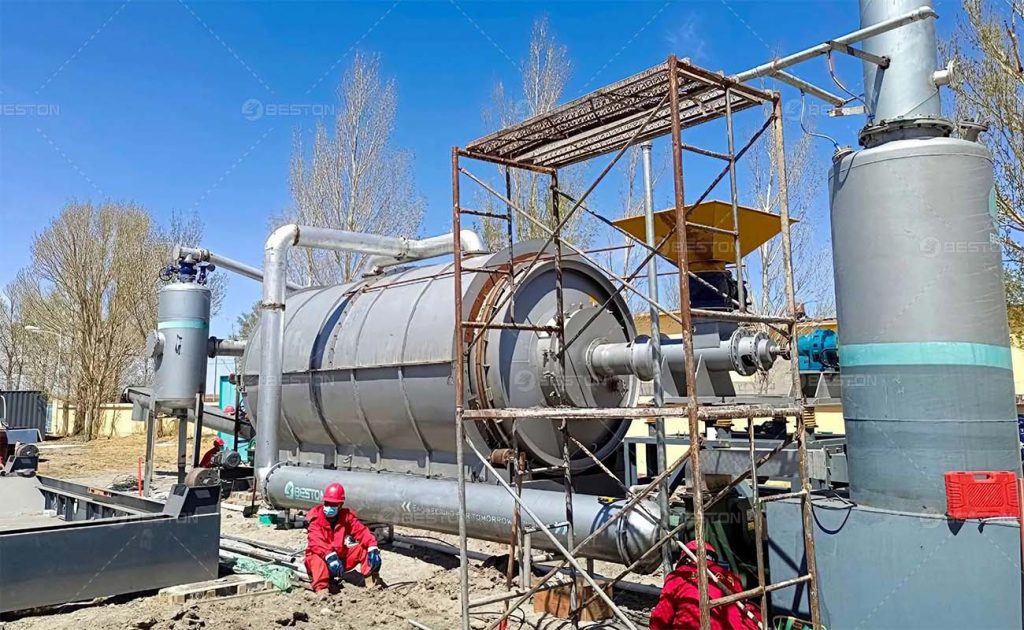Introduction
As the world grapples with the escalating challenge of solid waste, the emergence of pyrolysis plants offers a sustainable and forward-thinking solution to this global crisis.

The Pyrolysis Process
Understanding Pyrolysis
At its core, a pyrolysis plant is a thermal desorption unit that transforms organic materials into valuable products without the presence of oxygen. This innovative approach leverages controlled heating to break down complex substances, yielding a range of environmental and economic benefits.
Key Components of Pyrolysis Plants
Pyrolysis plants consist of several critical components, including reactors, feed systems, heat sources, and product collection systems. These meticulously engineered systems work harmoniously to ensure the efficient conversion of waste materials while adhering to rigorous environmental standards.
Versatile Waste Materials Suitable for Pyrolysis
Pyrolysis technology exhibits impressive versatility, capable of processing a diverse array of waste materials. Notably, pyrolysis plants are adept at treating tires, plastics, and sludge, making them a versatile tool in addressing waste pollution.
Environmental Benefits
Reducing Landfill Waste
The pyrolysis machine plays a pivotal role in reducing the volume of waste directed to landfills. By converting solid waste into valuable products, these facilities alleviate the strain on landfill sites and contribute to the preservation of valuable land resources.
Mitigating Greenhouse Gas Emissions
Pyrolysis presents a dual environmental benefit by mitigating greenhouse gas emissions. It not only reduces methane emissions from landfills but also generates biochar, a carbon-rich byproduct that sequesters carbon dioxide, thereby contributing to climate change mitigation.
Resource Recovery and Circular Economy
Beyond waste reduction, pyrolysis plants promote the concept of a circular economy. By extracting valuable resources from waste streams, such as pyrolysis oil, carbon black, and syngas, these plants reduce the reliance on virgin resources, fostering a sustainable approach to resource management.
Innovative Applications
Tire Recycling Through Pyrolysis
The tire industry has significantly benefited from pyrolysis technology. The tyre pyrolysis plants efficiently process discarded tires, converting them into valuable products like pyrolysis oil and carbon black, while simultaneously mitigating environmental harm.
Addressing Plastic Waste Issues
Plastic pollution represents a pressing global concern, and pyrolysis plants offer a promising solution. By breaking down plastics into useful materials, such as fuel or feedstock for the petrochemical industry, these facilities address the growing plastic waste problem.
Advancements in Sludge Management
Wastewater treatment plants generate substantial amounts of sludge, posing challenges in disposal. Pyrolysis plants have proven effective in converting sewage sludge into valuable resources, reducing the environmental impact of wastewater treatment.
Future Prospects
Advancements in Pyrolysis Technology
Continuous research and innovation in pyrolysis technology promise enhanced efficiency and an expanded range of treatable waste materials. These advancements hold the potential for even more effective solid waste management.
Scaling Up Pyrolysis Adoption
Recognizing the environmental benefits of pyrolysis, governments and industries are exploring opportunities to scale up its adoption. This proactive approach aims to address waste crises on a larger scale, ushering in a sustainable waste management era.
Environmental Policy Considerations
The integration of pyrolysis plants into waste management strategies has significant policy implications. Policymakers must carefully consider the regulatory framework necessary to encourage sustainable waste management practices while supporting the growth of pyrolysis as an environmentally responsible technology. If you need to consult more about solid waste recycling solutions, please visit Beston Group’s website: https://bestonasia.com/
In conclusion, pyrolysis plants represent a paradigm shift in solid waste treatment, offering environmentally friendly alternatives to traditional disposal methods. These innovative facilities reduce landfill waste, mitigate greenhouse gas emissions, and promote resource recovery, paving the way for a more sustainable future. As technology advances and awareness grows, the role of pyrolysis in sustainable waste management is set to expand, ushering in a more environmentally responsible era.